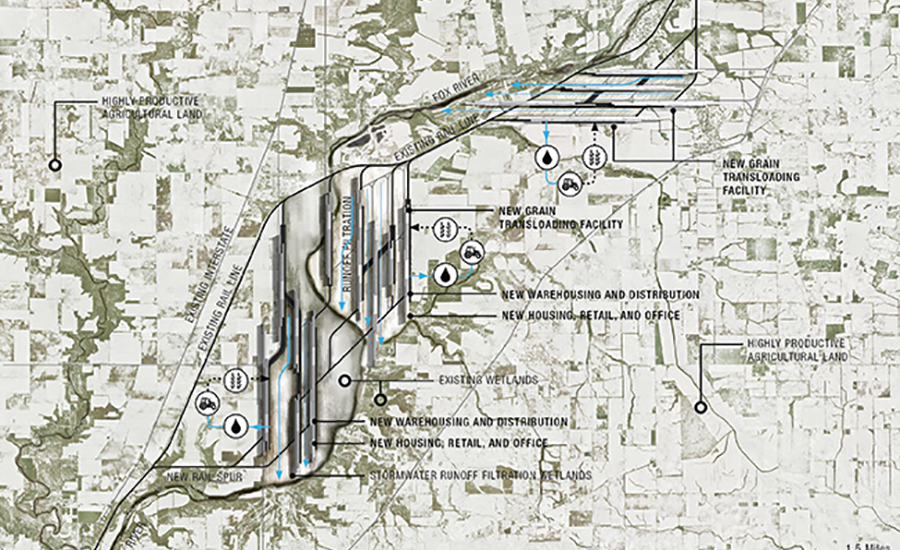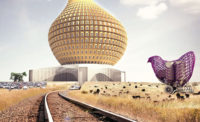On a single wall, O’Shea and his collaborators incorporate drawings and aerial photography with advanced GIS mapping and animation to present a new way to think about the future of the region. The Hinterlands founder teaches at the Illinois Institute of Technology (IIT) in the Master of Landscape Architecture program and often finds his work in academia complementary to his firm’s research. “We’re using both platforms to push dialogue about urbanism forward,” he says, “and to test and challenge the existing frameworks that we use to think about cities.”
Chicago's Next Generation
Conor O'Shea

O'Shea considers the links among commerce, agriculture, infrastructure, and the environment in schemes for developing the city fringes.
Image courtesy Hinterlands


